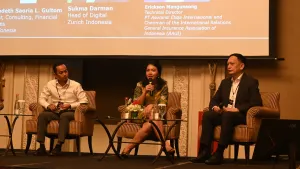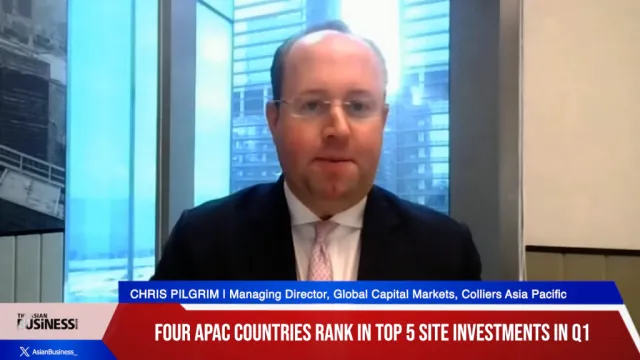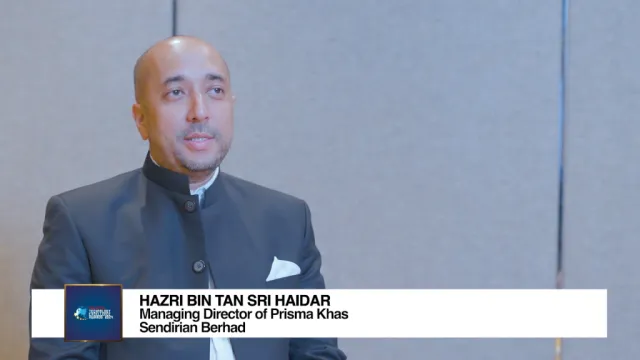
Asian fintechs to outpace global competitors; China posts tepid growth
S&P Global’s latest report shows Asia’s fintech growth may be gradual for 2023, but small and emerging economies will keep the region steady.
The exponential birth of financial technology (fintech) companies has grown overwhelmingly in the past decade. Yet, many had short lives, failing to clear the true technological hurdles of the financial industry.
The plot for fintechs was becoming too familiar that global fintech funding saw a slump last year. In a report by S&P Global Market Intelligence, funding for fintech firms fell to US$63b.
In the final quarter of 2022, only 599 rounds worth US$8b were recorded. This was 4.5 times less than 2021’s US$26b (1,000 rounds).
S&P Global said 2022 was challenging for the macro environment, which likely influenced the sentiments of venture capitalists (VC) and startups.
Venture capitalists might find interest in transitioning towards less populated economies worldwide, particularly in areas where conventional financial systems are scarce or underdeveloped.
These investors provide capital to young companies that are often in the early stages of development and have not yet reached a point where they can access traditional forms of funding, such as bank loans or public offerings.
In these regions, fintech models like payment orchestration, cross-border payments, sweep networks, and revenue financing could present alluring opportunities for VCs.
Moreover, middleware players involved in the embedded finance sector might also be seen as secure and promising investments in such contexts.
Does the potential outweigh the risks?
In 2022, Asia Pacific (APAC) saw its fintech funding fall 19% with a recorded US$5.68b investment, S&P Global reported.
However, this global phenomenon does not dampen the spirits of those persevering.
“If you're looking at why banks should work with financial institutions, you'll look at two main reasons right one being the niche expertise or solutions are the product which they bring. The second is the new markets and customer segments that give access to so in both these cases, it is something that traditionally the banks haven't done or looked at. That is where you see banks wanting to work with these fintech companies to try and essentially understand how it would be to incorporate it,” Athreya H.D., Financial Services Partner at Mazars in Singapore told the Asian Banking and Finance.
Similarly, results from a survey showed that fintech partnerships are essential for APAC banks and other financial institutions (FI).
Finastra research, in partnership with East & Partners in Singapore, showed that 87% of these entities believe in allyship with fintechs. Optimists are keen on connecting with an average of four fintechs within the year or so.
Among the reasons why banks and financial entities are absorbing these technologies include reducing operational costs, integrating modern technology, and pumping up their existing in-house systems.
Veena Rao, head of corporate lending at Finastra, also told Asian Banking and Finance that banks and FIs are experiencing a technological gap in meeting the needs of their customers.
“The pace at which banks can develop, launch and adopt new technology-enabled products in-house is not fast enough to fulfil changing customer expectations. Partnering with fintechs with the right expertise to innovate with FIs will enable FIs to orchestrate their digitization efforts across different functions at scale and with speed,” Rao said.
In the 18 months prior to April this year, over half of APAC respondents (54%) have digitised their customer-facing processes, slightly surpassing the global average of 47% and ranking second after Europe (73%).
Notably, a higher percentage of APAC respondents (26%) feel they are ahead in their digital journey compared to the global average (19%), but a similar proportion in APAC (34%) and globally (33%) believe they are more than a year behind.
Similarly, in S&P Global’s report “Global fintech funding primed for reset in 2023,” Southeast Asia — particularly Singapore, Indonesia, Malaysia, Thailand and the Philippines — has “emerged” as the fourth most identified hub for fintech venture capitalists.
ALSO READ: M&A not the only route to enter Asia’s financial markets: expert
Grass isn’t greener on the other side
“FIs could do more to bolster their customer data security and privacy infrastructure – an area where fintechs could play in too,” Rao said.
She added that the further reliance of customers on digital services has lured ill-intended entities to enable cyberattacks, leading to the downside of fintechs.
“Recent examples include the ransomware attack on Indonesia’s central bank in January 2022 and the data breach at the Reserve Bank of New Zealand. Data breaches, loose privacy infrastructure and poor risk management frameworks can lead to direct monetary losses, reputation damage and declining credit profiles for FIs,” Rao said.
For Mazars’ H.D., he explains that risks can still linger that investors should be wary of.
“They’re selective about the investments that they're making in this year, there's also a certain amount of market maturity that you see. In the past few years, there have been huge runs of fintechs that have come in the concept of non-investment is gone. And so you see the markets in terms of maturing where the good ones are essentially surviving, and the smaller ones are now merging with the other companies to form more focused business models,” H.D. said.
“And from an investment investor's perspective, there's also a focus on profitability and return on investment. So they're now doing their due diligence even more before they invest in fintechs. That said, in the larger scheme of things, I believe this is temporary and you'll see a more increased focus on such investments, as collaboration is the way forward, banks will need to reinvent themselves to stay current and fintech will feel such accelerations and be the way so you would see more considerable fintech coming into the market, and it's becoming more common practice for fintech, and banks to work together.” H.D. added.
Yet, this cyber landscape is so vast that other markets deal with layers of snags.
Mainland China and Australia have the largest number of publicly traded fintechs in the APAC region, with China’s fintech sector experiencing regulatory challenges.
S&P Global’s Sampath Sharma Nariyanuri, associate research analyst, said that China’s performance has been noticeable.
“In China, payment growth rates are actually slowing down and just like in other mature markets. And a lot of fintechs in China have also been around for more than a decade now. But that's where some of the similarities that China shares with the mature markets probably end,“ Nariyanuri said in a webinar.
“Another point is that there has also been a venture capital squeeze in China for some time now, which has somewhat curtailed the supply of private fintechs. But China does have a number of fintechs that are really waiting for the opportune time to go public and I'll talk more about them in a subsequent slide,” he added.
However, the tailwinds for APAC fintechs include the potential rebound of fintechs in China, the rise of real-time payments, and the progress of fintechs toward profitability.
“So we expect, going forward, 2023 to be a muted year unless we see really mega funding grounds involving billions of dollars from large private fintechs, especially from China where companies have been very quiet,” Nariyanuri added.
Despite minimal action seen from the mainland, its effect is minimal to the overall growth on a year-on-year basis.

















 Advertise
Advertise







